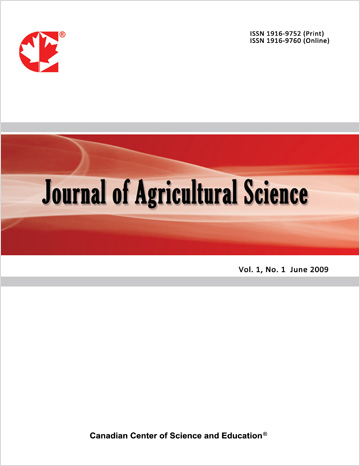Farm Typology and Constraints to the Adoption of Agroecological Practices in the Sudano-Sahelian Zone of Burkina Faso
- Mohamed Louré
- Delwendé Innocent Kiba
- Rasmata Nana
- Nestor Pouya
Abstract
Soil degradation and water scarcity pose a major challenge to agricultural production in Sub-Saharan Africa. In Burkina Faso, these conditions are more acute in the north part of the country exhibiting a Sahelian climate. Applying the principles of ecology in agriculture appears to be an option to sustainably improve agricultural productivity in this area. The aim of this study was to identify and characterize agroecological practices and the factors limiting their adoption. To this end, semi-structured interviews were conducted with 84 farmers in the nine municipalities of the Passoré province. The results indicate that the agroecological practices most commonly applied are crop rotation (100%), organic fertilization (98%), crop association (88%), water harvesting techniques like zaï (86%), stone lines (80%), half-moons (69%) as well as improved fallow (62%), mulching (58%), use of biopesticides (26%) and living hedges (25%). Our analysis highlighted that the main factors limiting the adoption of those agroecological practices are the lack of labor (92%), lack of agricultural equipment (88%), lack of organic manure (84%), a lack of financial resources (72%) and a lack of capacity building of farmers (44%). We identified three groups of farms. Group 1 was characterized by small farms with an average workforce and moderate crop diversity. Groups 2 and 3 were characterized by large workforce and larger farm areas. However, group 3 stands out for its very high tree density and high crop diversification. Considering these findings, agroecological practices best suited to the different categories of farms are needed to sustainably improve agricultural productivity in this area.
- Full Text:
 PDF
PDF
- DOI:10.5539/jas.v17n11p82
Journal Metrics
- h-index: 67
- i10-index: 839
- WJCI (2023): 0.884
- WJCI Impact Factor (2023): 0.196
Index
- AGRICOLA
- AGRIS
- BASE (Bielefeld Academic Search Engine)
- Berkeley Library
- CAB Abstracts
- ChronosHub
- CiteSeerx
- CNKI Scholar
- Copyright Clearance Center
- CrossRef
- DESY Publication Database
- DTU Library
- e-Library
- EBSCOhost
- EconPapers
- Elektronische Zeitschriftenbibliothek (EZB)
- EuroPub Database
- Excellence in Research for Australia (ERA)
- Google Scholar
- Harvard Library
- IDEAS
- iDiscover
- Jisc Library Hub Discover
- JournalTOCs
- KindCongress
- LIVIVO (ZB MED)
- LOCKSS
- Max Planck Institutes
- Mendeley
- MIAR
- Mir@bel
- NLM Catalog PubMed
- Norwegian Centre for Research Data (NSD)
- Open J-Gate
- OUCI
- PKP Open Archives Harvester
- Polska Bibliografia Naukowa
- Qualis/CAPES
- RefSeek
- RePEc
- ROAD
- ScienceOpen
- Scilit
- SCiNiTO
- Semantic Scholar
- SHERPA/RoMEO
- Southwest-German Union Catalogue
- Standard Periodical Directory
- Stanford Libraries
- SUDOC
- Swisscovery
- Technische Informationsbibliothek (TIB)
- Trove
- UCR Library
- Ulrich's
- UniCat
- Universe Digital Library
- WorldCat
- WRLC Catalog
- Zeitschriften Daten Bank (ZDB)
Contact
- Anne BrownEditorial Assistant
- jas@ccsenet.org
